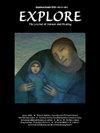Efficacy and safety of scalp acupuncture in the treatment of Tic disorders in children: A meta-analysis based on randomized controlled trials
IF 2.2
4区 医学
Q3 INTEGRATIVE & COMPLEMENTARY MEDICINE
引用次数: 0
Abstract
Aim
This study evaluates the efficacy and safety of scalp acupuncture in treating tic disorders.
Methods
We conducted a meta-analysis using data from 19 randomized controlled trials (RCTs) involving 1463 patients, sourced from various databases up to May 16, 2023. Stata15.0 was used to assess clinical efficacy rate, YGTSS score, TCM syndrome score, adverse reactions, and long-term efficacy.
Results
Scalp acupuncture significantly reduced YGTSS and TCM syndrome scores and improved clinical efficacy rates compared to controls [YGTSS: RR=-3.54, 95 % CI (-5.16, -1.93), P < 0.05; TCM: RR=-1.86, 95 % CI (-2.60, -1.13), P < 0.05; Efficacy: RR=1.14, 95 % CI (1.06, 1.23), P < 0.05]. Adverse reaction rates were lower in the treatment group (7.29 % vs. 12.61 % in controls), but not statistically significant [OR=0.69, 95 % CI (0.40, 1.18), P > 0.005]. Long-term efficacy was also stable [RR=-1.98, 95 % CI (-3.57, -0.39), P < 0.05].
Conclusion
Scalp acupuncture is effective in improving tic disorder symptoms, increasing treatment efficacy, and maintaining long-term benefits. However, due to the low quality of included RCTs and potential publication bias, further high-quality, large-sample, multicenter RCTs are needed for a more robust evaluation.
头皮针刺治疗儿童抽动障碍的疗效和安全性:基于随机对照试验的荟萃分析
目的评价头皮针刺治疗抽动障碍的疗效和安全性。方法采用截至2023年5月16日的19项随机对照试验(RCTs)数据进行荟萃分析,涉及1463例患者,这些数据来自不同的数据库。采用Stata15.0评价临床有效率、YGTSS评分、中医证候评分、不良反应及远期疗效。结果头皮针刺组与对照组相比,YGTSS评分和中医证候评分显著降低,临床有效率显著提高[YGTSS: RR=-3.54, 95% CI (-5.16, -1.93), P < 0.05;中医:RR = -1.86, 95% CI (-2.60, -1.13), P & lt; 0.05;疗效:RR=1.14, 95% CI (1.06, 1.23), P < 0.05]。治疗组不良反应发生率较对照组低(7.29% vs 12.61%),但差异无统计学意义[OR=0.69, 95% CI (0.40, 1.18), P > 0.005]。长期疗效稳定[RR=-1.98, 95% CI (-3.57, -0.39), P < 0.05]。结论头皮针刺能有效改善抽动障碍症状,提高治疗效果,保持远期疗效。然而,由于纳入的随机对照试验的质量较低和潜在的发表偏倚,需要进一步的高质量、大样本、多中心随机对照试验来进行更稳健的评价。
本文章由计算机程序翻译,如有差异,请以英文原文为准。
求助全文
约1分钟内获得全文
求助全文
来源期刊

Explore-The Journal of Science and Healing
医学-全科医学与补充医学
CiteScore
3.00
自引率
8.30%
发文量
179
审稿时长
25 days
期刊介绍:
EXPLORE: The Journal of Science & Healing addresses the scientific principles behind, and applications of, evidence-based healing practices from a wide variety of sources, including conventional, alternative, and cross-cultural medicine. It is an interdisciplinary journal that explores the healing arts, consciousness, spirituality, eco-environmental issues, and basic science as all these fields relate to health.
 求助内容:
求助内容: 应助结果提醒方式:
应助结果提醒方式:


